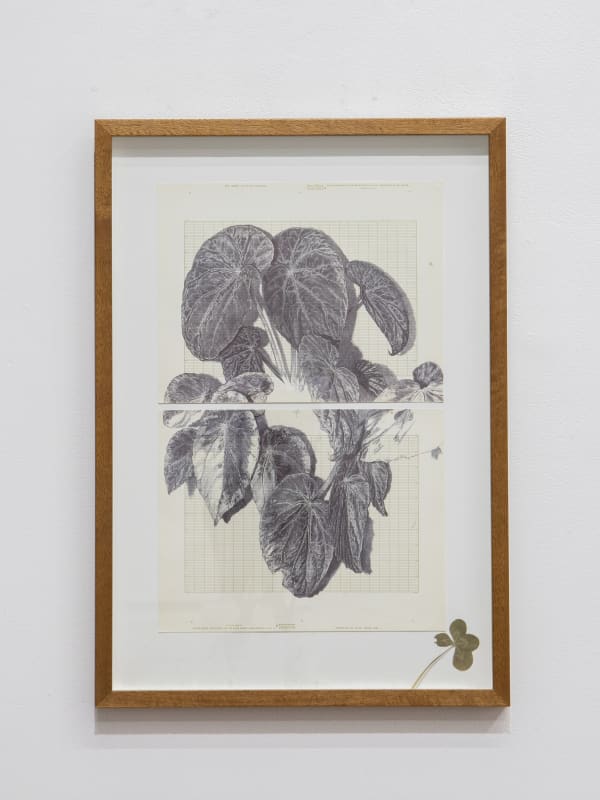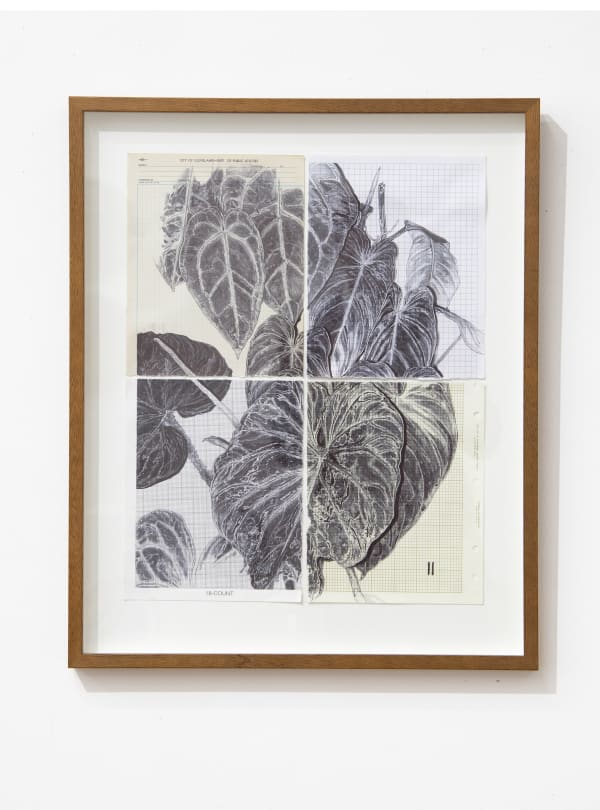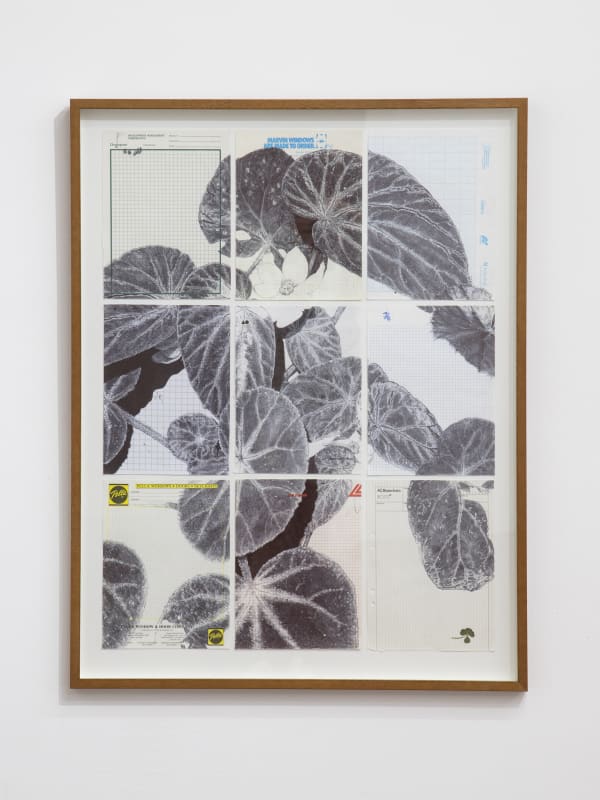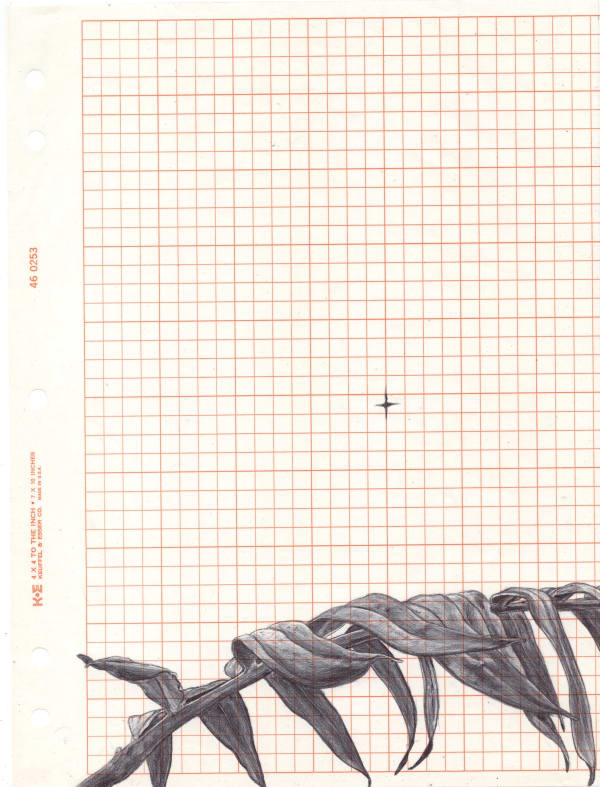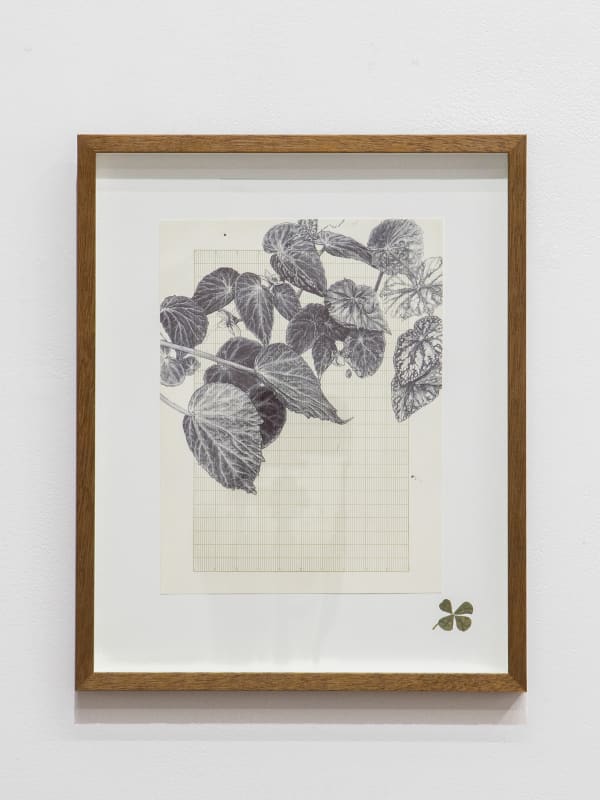-

-

-

-
-
 Neva HoskingThe Last Garden on Loftus Crescent IX, 2022ink on vintage graph paper, signed with four-leaf clover43 x 29.5 cm / 50.5 x 41.5 cm (framed)Click for more info.
Neva HoskingThe Last Garden on Loftus Crescent IX, 2022ink on vintage graph paper, signed with four-leaf clover43 x 29.5 cm / 50.5 x 41.5 cm (framed)Click for more info. -
 Neva HoskingThe Last Garden on Loftus Crescent V, 2022ink on vintage graph paper, signed with four-leaf clover30 x 21 cm / 43 x 33 cm (framed)Click for more info.
Neva HoskingThe Last Garden on Loftus Crescent V, 2022ink on vintage graph paper, signed with four-leaf clover30 x 21 cm / 43 x 33 cm (framed)Click for more info. -

-
 Neva HoskingThe Last Garden on Loftus Crescent VIII, 2021ink on vintage graph paper, signed with four-leaf clover43 x 30 cm / 50.5 x 41.5 cm (framed)Click for more info.
Neva HoskingThe Last Garden on Loftus Crescent VIII, 2021ink on vintage graph paper, signed with four-leaf clover43 x 30 cm / 50.5 x 41.5 cm (framed)Click for more info.
-
-
-

-
 Neva HoskingThe Last Garden on Loftus Crescent X, 2022ink on vintage graph paper, signed with four-leaf clover44 x 28 cm / 57 x 40 cm (framed)Click for more info.
Neva HoskingThe Last Garden on Loftus Crescent X, 2022ink on vintage graph paper, signed with four-leaf clover44 x 28 cm / 57 x 40 cm (framed)Click for more info. -
 Neva HoskingThe Last Garden on Loftus Crescent XI, 2022ink on vintage graph paper, signed with four-leaf clover28 x 43 cm / 41 x 54.5 cm (framed)Click for more info.
Neva HoskingThe Last Garden on Loftus Crescent XI, 2022ink on vintage graph paper, signed with four-leaf clover28 x 43 cm / 41 x 54.5 cm (framed)Click for more info.
-
-
-
 Neva HoskingThe Last Garden on Loftus Crescent II, 2021ink on vintage graph paper50 x 40 cm / 64 x 52.5 cm (framed)Click for more info.
Neva HoskingThe Last Garden on Loftus Crescent II, 2021ink on vintage graph paper50 x 40 cm / 64 x 52.5 cm (framed)Click for more info. -
 Neva HoskingThe Last Garden on Loftus Crescent III, 2021ink on vintage graph paper, signed with four-leaf clover85 x 64 cm / 97 x 75 cm (framed)Click for more info.
Neva HoskingThe Last Garden on Loftus Crescent III, 2021ink on vintage graph paper, signed with four-leaf clover85 x 64 cm / 97 x 75 cm (framed)Click for more info. -
 Neva HoskingThe Last Garden on Loftus Crescent IV, 2021ink on vintage graph paper, signed with four-leaf clover50 x 40 cm / 70 x 56 cm (framed)Click for more info.
Neva HoskingThe Last Garden on Loftus Crescent IV, 2021ink on vintage graph paper, signed with four-leaf clover50 x 40 cm / 70 x 56 cm (framed)Click for more info.
-
-
-

-
The Garden Grows Imperceptibly Slow, Undeniably So.
By Alex SinclairI have always been a firm believer that true happiness comes not from being able to experience the extraordinary, but by finding joy in the everyday. No place is that more evident than in one’s ability to pay attention to the everyday at a level detailed enough to actually notice change.
Change can be a traumatic sudden force in one’s life – the times in which it is are often easily remembered – but change can also be an extremely granular thing. More often than not, it is an imperceptibly slow process. But it is often here where we can find contentedness and peace.
Last year I took up running. I have always hated running. I could understand the reason one would engage in sports – football, rugby, even tennis – because there was a game to play, there was a competitive element, there was a target to aim for. But I could never understand running. To me, running for the sake of simply running felt like playing video games without the having the TV on. You’re pressing all the buttons, but for what? Running was a mechanic of something bigger than itself and unable to stand on its own as an activity worth spending time on.
Then, during long arduous periods of lockdown, out of pure frustration, I tried it. I was fed up. I needed a way to vent my frustrations. I lugged my useless out-of-tune body around a 5k loop and declared that yep, I was right. This is useless. This is truly pointless.
I had seen others running too. They didn’t run like me. They were coordinated, and smooth, graceful even. I was a man running, and they were runners. There was a subtle, but visually obvious difference when compared side-by-side.
Two days later, nothing had changed. I was still annoyed at everything from the state of the world to the state of my unwashed hair, unshaven face, unmade bed, untidy life. So I ran again. It was significantly better than the first time I ran. I was actually quite surprised. I made small changes the second time. I brought a water bottle. I listened to music. Everything helps.
It was about a month later when I realised the progress I had made. It’s not something you can see or hold. But it’s there. Unemployed and uninspired, but no matter what else I did that day, nobody could take away that one exercise in pure mechanics.
It was even longer after that when I realised how different the world looked in just a few short months. A set of poles and planks which became scaffolding and then a supermarket, wild grass in a field stretched up and around the shell of the abandoned car, winter smokers huddled outside a pub door turned to laughing groups of summer drinkers.
If I was to have run down Loftus Crescent on the right day, I might have seen a girl carrying a large plant or two and wondered where someone was going with something so grand and green? Through a little doorway, a hallway and into a kitchen, a bedroom, and a garden, held with love and care and a fine attention to avoid broken stems and crumpled leaves.
And with each day that passes, as I cross that spot again I would wonder what size the plants may be now. They become littered among a catalogue of other things that a mind can use to mark the progress of time. And it’s in this moment that I understand a meaning behind why someone might want to go running, or learn a new language, or complete a 10,000 piece jigsaw puzzle. It’s not about finding some kind of pleasure in the pain of breathlessness and aching muscles, but to be aware of your part in a world which is constantly changing and shifting, and for better and for worse, growing.
It’s been ten years since I commissioned Neva Hosking to do a piece for me. It was two pen-drawn portraits of myself and my girlfriend at the time. I was 23 years old and I thought it was the best thing in the world, to be able to own art like that. I framed it up really nice and the drawing travelled well as that girl hung it on several walls in several bedrooms. To me, Neva was the cool internet kid (she still is). I’d get messages late at night online and we would talk about copyright and copy cats and regular cats and movies and moving houses and “How’s things?” and “How are you?”
I considered her a full-fledged Artist then, like the Capital-A kind, and to see her launch a solo show now, ten years later gives me that same sense of noticing the everyday that I got from running. I didn’t realise the growth happening right there until hit right square with a singular comparison point – which is being mysteriously drawn to her work all those years ago, and now, finally getting a sense of what it is that I myself get from being lucky enough to look at these drawings.
In Neva’s work, the paper is as much the work as the marks she leaves upon it. I don’t so much view her work as drawing as I do a form of two-dimensional sculpture. The papers on which her drawings appear tie her world to ours in an inseparable manner. Through her use of visible margin lines, grids, company logos, Hosking chooses to let these visual markers shine through and draw attention to the medium with which she is working on. The printed grids on the paper act as windows to both project upon and to peer at, to let the viewer peek through, and to keep them at just the right distance. She is able to dictate the viewing point of those who are fortunate to stumble upon her work.
These drawings do not wish to place you inside this world, in the way a photorealist painter would attempt, but rather outside it and force you back to your own. They beg for you to see the girl drawing at the kitchen table with a ball point pen on whatever width of white paper was within her grasp. These are drawings that have the rare ability to not just show the scene of the drawing itself, but to draw your attention to the fact that it’s a drawing, and that someone drew this. They refer to the object, the act, and the artist simultaneously – and its sincere and unironic ability to reference itself is a remarkable achievement worth celebrating.








